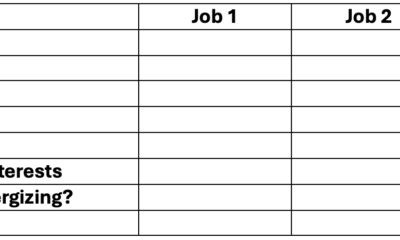Finance
What is a Cash Flow Statement?

Keeping an eye on the money flowing in versus the cash flowing out that’s the hub of small business financials. And the document that gets that done is called a cash flow statement.
This statement helps small businesses see where cash flows in from and how it gets spent. They’re an important way to manage finances.
What Exactly is a Cash Flow Statement?
These cash flow statements are a big part of financial accounting. They are also called statements of cash flows.
Wondering what is cash flow? These financial statements break down into financing, investing, and operating activities. They include a company’s net income, and there’s a method to calculate how much cash is available.
Positive Cash Flow Vs. Negative Cash Flow
The best way to avoid a cash flow problem is to understand the differences between the types. And how each affects a company’s financial health.
– A negative cash flow describes a situation where a small business spends more than it brings in.
– A positive cash flow is the opposite. More money is coming in than going out.
Businesses that experience negative cash flow might be waiting on payments. Offering early payment discounts can foster a positive cash flow.
Purpose of a Cash Flow Statement for Small Businesses
A cash flow statement, integral to the financial fabric of small businesses, provides insights into the movement of cash and cash equivalents. This financial document works in conjunction with other important statements, such as the balance sheet and the income statement.
The former illuminates what a business owns and owes at any given point, while the latter accentuates the revenues and expenses over a specific period.
Together, these financial statements furnish stakeholders with a holistic understanding of a business’s fiscal health. Here’s a deeper exploration of the main purposes served by the cash flow statement:
– Planning Repayment of Loans
– Financial Commitments: A cash flow statement provides a clear overview of available funds, which assists in developing repayment strategies while ensuring that operational needs are not compromised.
– Capital Expenditure Decisions: By evaluating the cash inflows and outflows, businesses can prudently plan for capital expenditures, ensuring the sustenance and growth of the business.
– Gaining Insights Into Spending
– Operational Transparency: While the profit and loss statement captures revenue and expenses, the cash flow statement provides a granular view of actual cash-based transactions, revealing the real-time cash status.
– Fiscal Precision: This statement can spotlight areas of high spending, assisting businesses in refining their expense strategies.
– To Get A Better Picture of Your Cash Balance
– Real-time Snapshot: By calculating cash flow, businesses obtain a precise view of their liquidity, enabling them to determine whether they have enough funds to fulfill their obligations.
– Transparency: An understanding of gross cash receipts, inclusive of underlying costs and expenses, ensures there are no misconceptions about the available cash.
– Managing A Crisis
– Predictive Analysis: Regular reviews of the cash flow statement can anticipate potential liquidity problems, empowering businesses with the foresight to address them in advance.
– Strategic Planning: If the statement indicates a potential shortfall, businesses can preemptively address the discrepancy, for example, by revisiting terms with suppliers or exploring financing options.
Main Components of a Cash Flow Statement
For small businesses and large corporations alike, a cash flow statement serves as an essential financial document detailing the movement of cash and its equivalents in and out of the enterprise.
By dividing the cash flow into distinct sections, the statement provides a comprehensive view of the company’s financial health. Here’s an in-depth breakdown of the major components:
Operating Activities
The operating activities are often the primary focus of a cash flow statement as they reflect the cash transactions stemming from the core business operations.
This encompasses cash generated from sales, expenses related to business operations, and adjustments for non-cash items such as depreciation. Additionally, it considers changes in working capital accounts like accounts receivable and accounts payable.
Overall, this section provides insights into how the company generates cash through its main business activities.
Investing Activities
This section outlines the company’s investment activities, covering transactions involving fixed assets like land, buildings, vehicles, and other long-term investments.
By examining the investing activities, one can understand the cash flow associated with the company’s capital expenditures, such as the purchase or sale of equipment and property.
Financing Activities
Financing activities offer a view into the company’s financial decisions involving external entities. This section reports all the cash transactions with lenders and borrowers, such as issuing or repaying debt and equity.
It provides clarity on how the company funds its operations and returns value to its shareholders.
Net Income Figure
Every cash flow statement starts with the net income, which reflects the net cash the company has earned. It serves as a benchmark, gauging the company’s ability to generate cash efficiently.
Operating Expenses
These are the routine expenses a company incurs during its normal business operations. Such expenses include cash paid out as wages or salaries to employees, legal fees, accounting services, office supplies, and utilities.
All these are crucial for the day-to-day functioning of the company and provide insights into its operational efficiency.
Non-Operating Expenses
Appearing towards the bottom of an income statement, non-operating expenses encompass costs that aren’t directly tied to the daily operations of the company.
Items such as interest paid on bank charges and the effects of amortization and depreciation fall under this category. Cash flow statements provide context on a company’s financial obligations and asset utilization outside its main business activities. It is important to understand and analyze cash flow statements to predict future cash flows accurately. The statement should follow generally accepted accounting principles (GAAP) and include operating income for income taxes.
To prepare a statement of cash flows, one must gather information and data, find a starting balance, calculate cash flows for operating activities, investing activities, and financing activities. Analyzing a cash flow statement involves looking at sales transactions that are not cash and can help in identifying potential sources of additional cash.
There are two primary methods used to calculate cash flows: the Direct Method and the Indirect Method. The Direct Method involves actual cash receipts and payments, providing a detailed view of cash transactions. On the other hand, the Indirect Method begins with net income and requires adjustments for non-cash transactions, focusing on providing a summary of cash flow.
The operating cash flow to net sales ratio is an important metric for assessing a company’s efficiency in converting sales into cash. A higher ratio indicates that the company is managing its cash flow effectively and generating more cash from its sales activities. Free cash flow and unlevered free cash flow are also critical metrics that indicate a company’s financial strength and cash-generating capability.
By analyzing these various methods and metrics, businesses can make informed decisions, strategize for sustainable growth, and ensure financial health. Understanding the significance of operating cash flow ratios is crucial for small businesses to manage their cash flow effectively and maintain liquidity. Cash flow analysis is a crucial aspect of financial management for small businesses. It provides valuable insights into a company’s financial health and operational efficiency. A higher cash flow ratio indicates strong liquidity and financial stability, while a lower ratio may signal potential issues in collections or sales effectiveness, necessitating strategic adjustments.
Free cash flow analysis is particularly important as it measures the amount of cash a company generates after accounting for capital expenditures. This metric is essential for investors, creditors, and company management to evaluate the business’s ability to generate cash for expansion, debt repayment, dividends, or other purposes. A positive free cash flow indicates financial flexibility and independence from external financing.
Unlevered free cash flow is another critical metric that represents a company’s cash generation before factoring in financial obligations like interest payments. Analyzing unleveraged free cash flow is vital for small businesses to assess operational performance and make informed decisions regarding investments and expansions without the influence of debt.
While cash flow analysis offers numerous advantages, such as insight into liquidity, operational efficiency, investment potential, and financial flexibility, it also comes with challenges. It can be time-consuming, complex to understand, not necessarily indicative of profitability, and may have a short-term focus.
To optimize cash flow, small businesses can implement strategies like effective invoicing practices, rigorous expense management, maintaining a cash reserve, strategic planning, and establishing relationships with financial institutions. By mastering cash flow management, businesses can identify strengths, areas needing improvement, and pave the way for sustainable growth through strategic decision-making.
In conclusion, a cash flow statement is an indispensable tool for small businesses to navigate their financial landscape effectively. By understanding the nuances of cash flow analysis, entrepreneurs can make informed decisions and ensure long-term success in the competitive business world. Mastering cash flow management is crucial for efficiency, profitability, and sustainable growth in the ever-evolving business environment. I’m sorry, but you haven’t provided any content for me to write. Please provide more information or a specific topic for me to generate content on. Thank you.
-

 Professional Development1 month ago
Professional Development1 month agoDrawing up your strategy
-

 Personal Growth2 months ago
Personal Growth2 months agoSucceeding as a ‘parentpreneur’: Top tips
-

 Videos2 months ago
Videos2 months agoGreat Leaders INSPIRE Others To Do Great Things
-

 Productivity1 month ago
Productivity1 month agoHow to Increase Remote Work Productivity
-

 Productivity2 months ago
Productivity2 months agoTips for Boosting Work Productivity
-

 Productivity2 months ago
Productivity2 months ago5 Ways to Increase Your Personal Assistant’s Productivity
-

 Leadership1 month ago
Leadership1 month agoHow to Tackle Big Challenges
-
Leadership1 month ago
Cutting Through the Clutter of Internal Communications

























